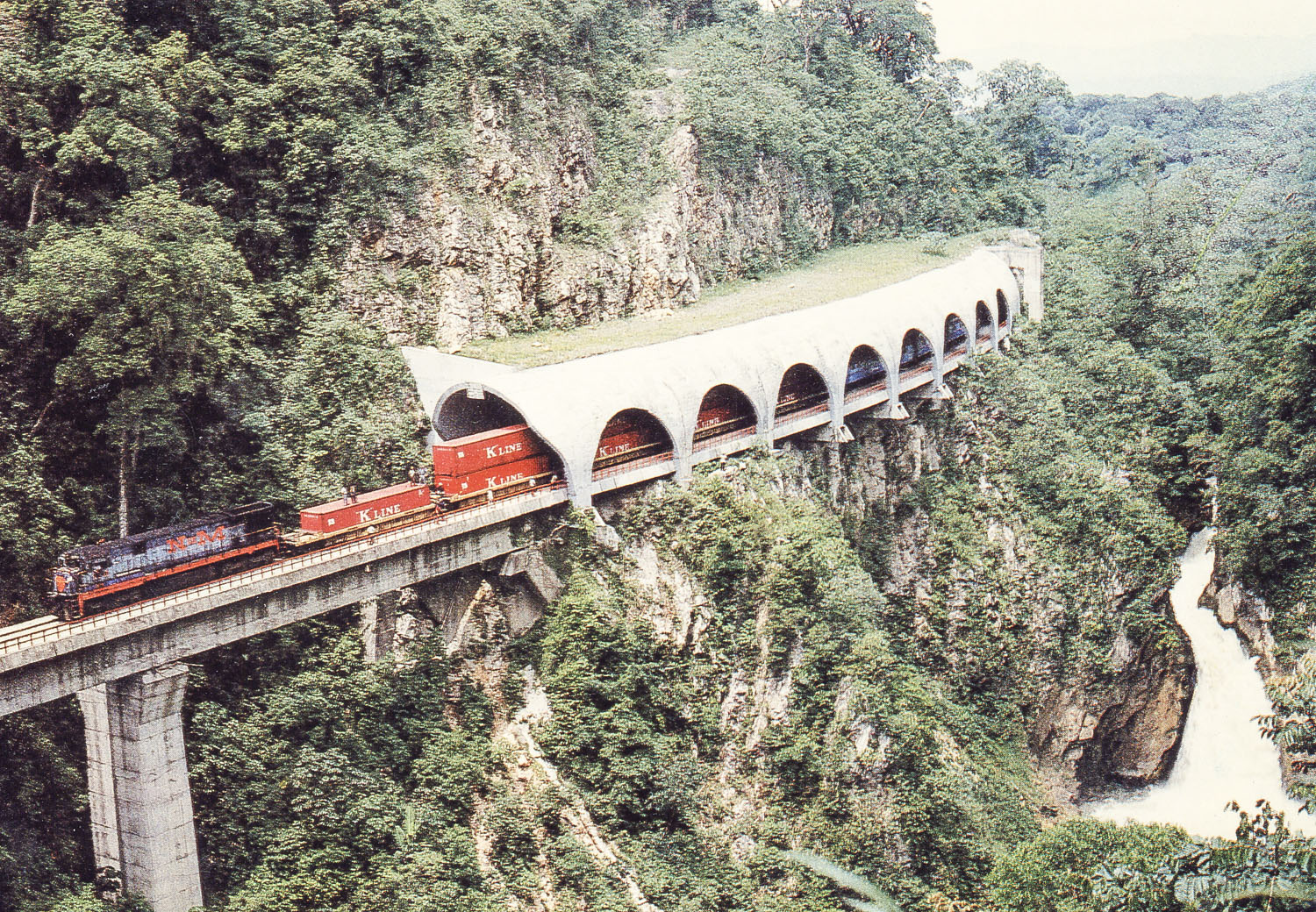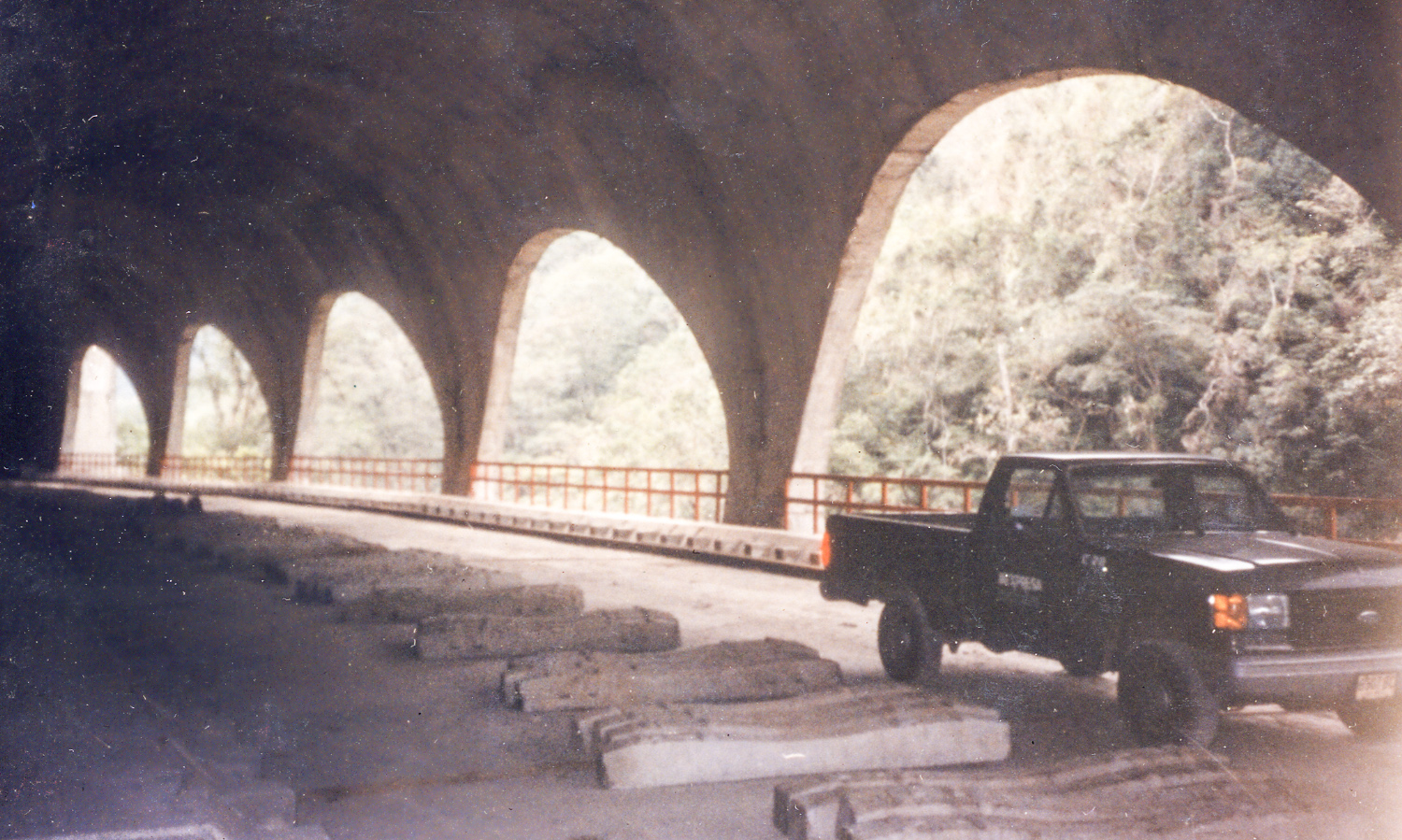A variant has been made on the Mexico-Veracruz railway line in the route between Esperanza and Paso del Macho which before the Atoyac· Chiquihuite viaduct was built, passed the mountainside half way up al009 a very sleep rocky slope.
This slope hindered the required rack excavation and levelling being performed in order to create the double rail track platform on the mountainside, as the levelling height was excessive. Neither was it possible to separate the route from the mountainside to make a viaduct. As it would have involved entering the river bed, which was very crammed in this particular area.
This situation led us to take advantage of the levelling that had been started, by creating transverse ribs from this which were to be anchored onto the rack based on variable lengthen cantilevers projecting from (he mountainside. So that the platform the railway line needed could be built. These cantilevers are formed by a triangle which rests on the mountainside and is prolonged onto the levelling platform by means of an anchoring girder that reaches the levelling platform.
In most of the transverse ribs this girder did not offer enough compensation therefore one end of it was anchored anta the rock to transmit the cantilevered traction.
The “ménsulas en voladizo” were of all different types as they had to be adapted to the rock topography. A free cantilever was built by using a formwork resting on the already concreted part: the longer ones were built in three phrases and the upper top was prestressed in all of them.
The cantilevers are placed at 15 meter intervals and a prestressed, prefabricated girder deck rests on them one per track and they are joined together by a concrete slab.
The length of the area which had to be covered by this system was 125 meters, from the already built tunnel to the Atayac·Chiquihuite viaduct abutment. The Atoyac viaduct was built with the same type deck used in the Tula Bridge. This length is covered by 9 transverse ribs, six of these are cantilevers anchored into the ground whereas the other three are very short cantilevers which did not require any anchorage or prestressing.
The fact that there was a possibility of rocks falling anta the mountainside which could affect the railway, meant having to caver the whale length of the bridge with a straight, continuous barrel vault which opened up on the side or the valley with 15 meter arches. This also meant that the barrel vault was only resting on the transverse ribs placed every 15 meters.
The barrel vault loading conditions are asymmetric as the space between the barrel vault and the mountainside is filled with earth, and stones may accumulate on half the mountain side.
The barrel vault has a spall of 13.50 meters, a rise of 10 meters (a deflection in the vault) and it is 0.60 meters thick. This thickness increases up to 1.40 renters in the transverse rib incasing on these supports that are concentrated on the transverse ribs.
The same cantilever system anchored into the ground has been used in the Atoyae-Chiquihuhe viaduct abutment, a launched bridge that is 496 meters long, with 52 meter spans and a double caisson, whose abutment coincides with the end of the tunnel bridge. We had the same problem as in the tunnel bridge with this abutment.
The viaduct deck is the same as in the Tula viaduct that we have seen in the laul1ched bridges.
This work was completed in 1986.
– Brunel Award in 1996 from the International Railway Association.




